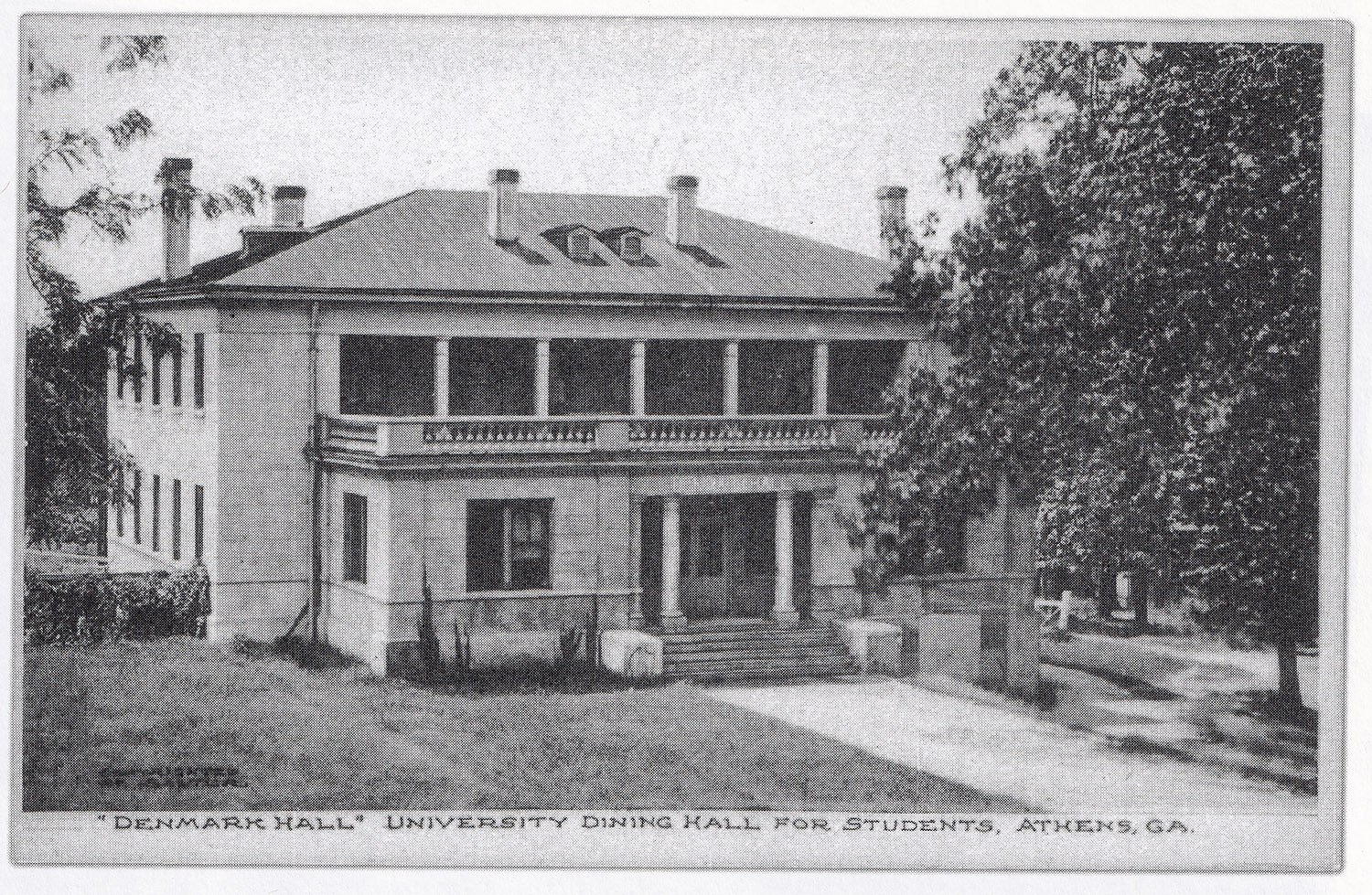The following text is the transcript of a presentation given at the 1884 convention of the American Institute of Architects by Edmund George Lind (1829-1909), professionally known as E.G. Lind, a British-born architect who spent most of his life and career in Baltimore, but practiced in Atlanta from 1883 to 1893.
Although his work in Atlanta and the Southeast in the 1880s and 1890s was largely unremarkable, Lind was by all accounts a well-respected architect who sought to elevate the status of the entire profession, and before 1885 he was the only architect in Atlanta who was a member of the American Institute of Architects (AIA).
Lind read the following paper on October 21, 1884, at the annual convention of the AIA, held in Nashville, Tennessee. The thesis has little to do with architecture, tenuously connecting the subjects of color and music in a meandering and mystical fashion that was popular in the late 19th century [G.L. Norrman‘s Architecture as Illustrative of Religious Belief is another prime example], and Lind makes numerous references to songs and music that are likely unfamiliar to modern readers.
Lind further explored the topic of color in his 1892 article “Coloring of Rooms”, and in 1893, he wrote a paper entitled “A Few Words About Acoustics”, in which he stated that he designed music halls and concert rooms in dimensions based on the number 7. It’s in this paper, however, that Lind first explains his interest in the number 7, which he later referred to as “the symbol of perfection and completeness”.

“The Harmony Between Color and Music”
By E.G. Lind, F.A.I.A., Baltimore.
“The harmony existing between color and music is so remarkable that it cannot fail to interest all who will give the subject a little attention, and the more it is investigated the more we shall be struck with its various correlations.
The first quality noticeable, as harmonizing these two sciences, is the numeral one of 7. There being that number of natural colors, and the same of natural sounds. And in this connection it may be proper to direct attention for one moment to the pregnant use of this number throughout the history of the world. In the earliest writings with which we are familiar, the Holy Scriptures, it occupies a very conspicuous position, beginning with a hallowing of a seventh day as a Sabbath of rest upon earth, and ending in the pouring out of the seven vials of wrath upon the people. Pharaoh, you know, dreamed of and experienced a seven years of plenty and seven of famine, Naaman was directed to wash seven times in the river Jordan that he might be cleansed of his leprosy. Joshua besieged Jericho with seven Priests sounding seven trumpets, as during seven days they marched seven times round the walls of the doomed city. The great feast of the Jews was held seven days, commencing on the seventh day of the seven month of the seventh year. And many other instances might be cited where this particular number is alluded to. Our very existence seems to be in some mysterious way connected with it, for on the seventh day, the pulse of humanity beats slower and feebler than on the other six days. Diseases change for better or worse on the seventh day, and we are told that every seventh year our whole bodily system is renewed. Several works have been written bearing upon this special subject, and it is quite possible that 7 may be a complete and perfect number in some way governing and pervading all natural science, for it is not an unreasonable presumption that the Creator worked upon some definite plan which may form the key to the whole design.
To proceed with our analogy [diagram exhibited of solar spectrum and colored side of music].
In the solar spectrum we have seven colors. Red, orange, yellow, green, blue, indigo and violet, which we call the natural colors. In music we have seven sounds, do, re, me, fa, sol, la, and si [ti], which we term natural sounds. To form a complete chromatic scale of sound, we need five other notes, viz: do sharp, re sharp, fa sharp, sol sharp and la sharp, so that the seven natural sounds are increased to twelve. A correlation will be found in the color scale, as red merges into orange, orange into yellow, green into blue, blue into indigo and indigo into violet, so that we have complete and correspondingly harmonious chromatic scales both of music and color.
The natural scale of do in music has been so named because the human voice is almost universally tuned in that key, and the first note of that scale, do, gives out two hundred and forty vibrations to convey the impression of that particular sound to the ear.
In the next note, re, these vibrations are increased to two hundred and seventy, and so as we ascend the scale till the seventh note, si, is reached, when four hundred and fifty distinct vibrations are recorded. In short, the higher and more distant the note, the greater number of vibrations necessary to produce it.
In color we find an analogy in the fact that the sensation of red is imparted to the eye by a certain number of vibrations of light, the second color, orange, by an increasing number of vibrations, and so on ascending the scale. These vibrations bearing the same harmonious correlation with reference to sound, although not the same in actual numbers, and as in sound the deeper tones are the near ones, so in color the warmer tints composed of red are made use of by artists to depict nearness and the colder greys to obtain distant effects, thus blindly observing a natural law which we have endeavored to make clear in the diagrams presented, a law, too, entirely in harmony with the law of sound.
We have previously stated that there are seven natural colors in the solar spectrum, but in reality there are only three; red, yellow and blue, which are known as the primary colors, the other four being merely combinations of the former. In our colored scale of music it will be seen that the chord do, mi, sol is formed by these three primary colors, and as the three sounds, or chord notes, form a key to the musical composition, so the three colors are the base and foundation for the whole system of color. Red and yellow producing orange; yellow and blue, green; and blue and red, indigo and violet. As well-known the three primaries commingled make black, and if the whole solar spectrum be rotated rapidly white light is produced.
The two sciences being so much in accord, as we have shown, it might be presumed that what would please the ear would please the eye. If, therefore, a musical instrument should be so constructed that when played upon colored sounds would be produced, then we might expect lively music to produce bright colors; said tunes subdued and secondary colors, and doleful sounds, colors of a dull and sombre hue. Nay, even the national airs of a particular country might partake of the peculiar characteristics of its people. [These different characteristics illustrated by colored diagrams of various tunes, “Yankee Doodle”, “John Anderson, My Jo”, “Bethany”, “Windham”, etc., which fully sustained the foregoing theory, and especially so in the colored tune of “Auld Lang Syne”, which bore a remarkable resemblance to a Scotch plaid.]
In preparing the various colored diagrams illustrating this paper, it was found that a piece of music colored in accordance with the rules of color could be successfully harmonized by a person wholly unacquainted with music, so long as he understood the said rules of color, for he would only have to apply notes with primary colors in opposition to primary colors and secondary colors to secondary, and he would produced as perfectly harmonized a piece of music as if he had been fully acquainted with thorough bass.
As a country advances in civilization so does it advance artistic taste, it is no longer satisfied with the crude colors and tones of a ruder age, it seeks a higher plane, more complex, refined and intellectual. The primary colors and sounds are supplemented by others more complicated and aesthetic; the possibilities of each science is pushed to the extreme, every combination of tone and semi-tone in music and every shade and tint in color is made subservient to higher demands, and pleasures are imparted which could not possibly have been realized in the earlier stages of civilization.
[Diagram in illustration “Sullivan‘s Lost Chord“.]
In short, so allied are the sciences of color and music that it is possible to give a color to every sound and a sound to every color. All the intonations of the human voice can be easily depicted in color as on a violin, there is no limit to either, and symphonies in red and green, and idyls in blue and yellow are nearer of attainment than artists ever dreamed of or hoped for. [Diagram exhibited of a “Child’s Wail” and “Lawyer’s Speech”.]
Curious to trace the gradual development of color and music from the earliest to the present times. We examined a great number of examples of color, with the following results: Adhering to the harmonic number, 7, we selected that number of examples from many, and found that in the savage tribes the only colors known and used were red, yellow, white and black. The Egyptians added blue and green to this list, and so on upward through the Greek, Pompeian, Arabian, Middle Age and Renaissance periods there was a gradual accession of color, till in our own day we absorb all the colors of the spectrum and many more.
Of the progress of musical sounds we have fewer opportunities for acquiring information. We know that among savage tribes few colors and sounds prevail, and these too of the most primitive characters. It is fair to assume color and music have kept on with equal step, hand in hand, neither in advance of the other so will they continue through the ages to the end, enobling and refining each other.
One word for our own art. As “frozen music,” architecture is fairly entitled to a place beside her two lovely sisters; we have then the great civilizers of the world, architecture, music and painting, these three.
In conclusion, it may be asked in relation this “Cui bono?” What good will it do? We cannot tell; we think it possible that these harmonies may be so utilized as to be productive of much good, if by means of seeing these colored notes the deaf mute can be made to understand something of the nature of sound, or if by hearing them a blind person can be given to understand something of the nature of color, a great good will have been accomplished; a new field will have been opened and new pleasures added to the few enjoyed, by two classes of suffering humanity whose afflictions naturally excite the kindly sympathy of all.”









